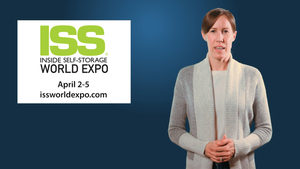November 1, 2007
A decade ago, you could build a self-storage facility in almost any location, raise rents and clip coupons. Before long, owners were in phase-two mode and thinking about quitting their day jobs. Boy, have times changed! But one thing that hasnt changed is the cash-flow benefits of cost segregation, or cost seg, the deferment of taxes (reduction of tax payments) through the use of accelerated depreciation.
Storage owners often ask: Is cost seg legal? Will I be audited? When do I receive the benefits? Since 2000, the IRS has published guidance for the implementation of a defendable cost seg. It encourages owners to correct their depreciation method, having reduced the amount of time it takes to recover missed depreciation under the Change in Accounting Method and increased the expensing limitation under IRC §179. Ultimately, this has translated into an increase in overall cash flow.
While the IRS has embraced the cost-seg approach, it has also emphasized the importance of hiring firms that specialize in the procedure and educating oneself to capitalization rules as well as construction means and methods. Firms without hands-on construction experience should be approached with caution.
Cost Seg and Self-Storage: A Perfect Match
As primary demographic areas become increasingly over stored, facility owners should consider increasing cash flow through a reduction in one of their biggest billsfederal income tax. If youre depreciating your facility over 39 years, you may be sitting on a financial windfall that can be secured through the use of cost seg.
Self-storage is an ideal candidate due to the vast amount of site work required versus the overall cost of building improvements. Site work (asphalt paving, storm-water drainage, sidewalks, fencing, curbing, security lighting, underground utilities, etc.) has been specifically identified by the IRS as a separate asset category with a reduced life (15 years) compared to the actual building or buildings (up to 39 years). There are other systems that can even be depreciated over five- to seven-year periods such as movable partitions, CCTV, controlled access gates, computerized locking or alarm systems, etc.
The tax savings of cost seg for self-storage is usually significant, since a high percentage of the construction costs are site-work related. Recently, a single-story, 50,000-squarefoot facility yielded an additional $164,000 in cash flow using cost seg. The primary driver was the site work and personal-property improvements. The direct and indirect costs totaled $52 per square foot for a depreciable basis of $2.6 million. The facility was able to reclassify 32 percent of the depreciable basis to shorter recovery periods of 15, seven and five years rather than depreciate all of it over 39 years.
What Does a Study Entail?
Cost-seg studies apportion the costs of particular components of a building and site to specific asset classifications for federal tax purposes. To optimize the reclassification from longer to shorter lives, a property analysis is required. This is accomplished by preparing a detailed quantity take-off analysis of the construction method, cost development and application to pertinent Internal Revenue guidance. Preparing a cost-seg study requires a detailed understanding of IRS and tax-court case law complemented by construction/engineering experience and cost allocation.
IRS Support
IRS supports cost seg, publishing how-to bulletins and providing examples to simplify the process. It is not necessary to re-file your tax returns; you just need to submit IRS Form 3115 requesting a Change in Accounting Method.
The IRS and tax-court rulings have actually improved the benefits of cost seg. The IRS permits the taxpayer to receive catch-up depreciation, in essence a tax refund. This is the difference between the depreciation taken thus far and the depreciation that could have been taken using cost-seg techniques. This catch-up depreciation can be taken within a single tax year. Depending on when the property was acquired, this could represent a windfall of cash.
This is a case in which 15 minutes could save you in excess of $150,000. Cost seg is straightforward and perfect for self-storage, based on the propensity of site improvements. Its not risky or audit-triggering. The process follows IRS guidelines, and the money saved can be substantial. Why pay more in taxes than you have to?
Mark de Stefanis is president of Construction Cost Recovery Inc., headquartered in White Plains, N.Y. The firm specializes in cost segregation, construction-cost auditing, deferred-maintenance analysis, and reproduction cost studies for tax certiorari proceedings. For more information, visit www.ccrtaxaudit.com.
You May Also Like





